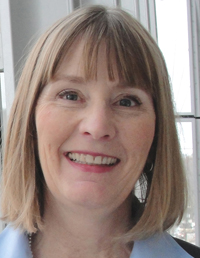Times are tough for libraries, and when times get tough, managers—whether college administrators, a principal, a board of trustees, or even voters—start asking about the viability of programs and the measurable benefits of those programs. That’s why understanding how to measure your library’s activities—and therefore proving their value—is critical in today’s economic environment.
In Using Qualitative Methods in Action Research: How Librarians Can Get to the Why of Data, editors Douglas Cook and Lesley Farmer provide an array of examples that use qualitative research (which analyzes observed behaviors or transactions or a group under study) to understand what does and doesn’t work with a library instruction program. They also look at changes a library may need to implement in order to better meet the needs of students; how to evaluate and improve reference interviews; and what to do to improve collection development processes. Such qualitative methods can help explain why a program is valuable.
Indexed. ACRL, 2011. 264 p. $60. 978-0-8389-8576-2
Just Plain Data Analysis: Finding, Presenting, and Interpreting Social Science Data by Gary M. Klass is an exploration of the types of quantitative research (which is rooted in data and statistical analysis) that can be used to draw conclusions about such social science issues as crime rates and measuring educational achievement. Klass uses examples of statistical claims to demonstrate how changing the time frame for data collection or looking at different correlations can result in varying or misleading statements. He also has chapters on how to tabulate and display numbers and how to use graphical presentation effectively.
Indexed. Rowman & Littlefield, 2012. 202 p. $24.95. pbk. 978-1-4422-1508-5
Sandra D. Andrews’s Power of Data: An Introduction to Using Local, State, and National Data to Support School Library Programs couples a practical guide to sources of good statistical surveys with discussions of how to use information in statistical reports. The purpose is to learn how best to use data at your own school district and building level to develop arguments for the efficacy of your program. Andrews, who is on the faculty at the University of North Carolina at Greensboro, looks at possible questions one might have, then walks readers through the local, state, and national resources that could help benchmark performance, demonstrate meeting standards, and advocate for support.
Indexed. AASL, 2012. 88 p. $36. 978-0-8389-8617-2 (Also available as an ebook.)
Danny P. Wallace and Connie Van Fleet’s Knowledge into Action: Research and Evaluation in Library and Information Science provides research methods and principles meant to help students and practitioners understand how to conduct research and/or use the research of others. While the main portion of Knowledge into Action covers research methods, the authors have also included a discussion of ethics and politics with regard to research, as well as a brief chapter of pointers on how to evaluate the quality of published research.
Indexed. Libraries Unlimited, 2012. 388 p. $55. 978-1-59884-975-2 (Also available as an ebook.)
Engaging in Evaluation and Assessment Research not only focuses on the “how” of doing research about library services but extends that focus to help people use the resulting evaluation and assessments. Coauthors Peter Hernon, Robert E. Dugan, and Danuta A. Nitecki explore the individual components of an evaluation and research study—reflective inquiry, development of procedures, and data collection, analysis, and presentation. The authors also provide tips on how to make such research part of organizational culture.
Indexed. Libraries Unlimited, 2011. 305 p. $60. 978-1-59884-573-0
In the second edition of Assessing Service Quality: Satisfying the Expectations of Library Customers, authors Peter Hernon and Ellen Altman provide an example of applying research and assessment to the library issue of service quality. The authors give simple, customer-centered ways to measure patron opinions using such data-collection methods as surveys and focus-group interviews as a way to plan for continuous service-quality improvements. They also look to ways to measure customer loyalty.
Indexed. ALA, 2010. 215 p. $65. 978-0-8389-1021-4

